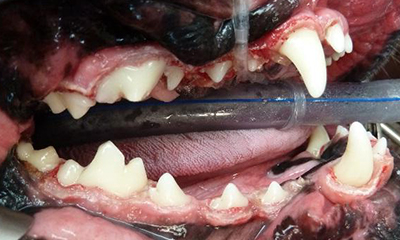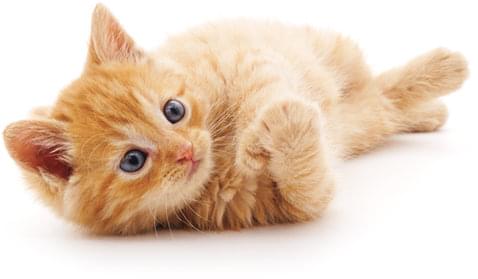Gum Hyperplasia
If your pet shows excessive growth or thickening of gum tissue, he/she might have gum hyperplasia.
What you need to know…
- Enlargement of the gums create a “pocket” and can result in bone loss and infection.
- Inflammation may be due to bacteria and plaque.
- It can also be a reaction to certain medications like Cyclosporine or Amlodipine.
How gum hyperplasia may look:

Treatment:

Schedule an appointment to have your pet evaluated by clicking on the “Get In Touch with Us” button.
LEARN MORE about gum hyperplasia:
Gingival hyperplasia is excessive growth or thickening of gum tissue. This condition is more common in Boxers, Great Danes, Collies, Mastiffs, and Retriever breeds but may be seen in any breed. The hyperplasia is the result of inflammation due to bacteria and plaque or can occur secondary to certain medications (eg. Cyclosporine or Amlodipine).
Treatment involves an oral examination, dental x-rays and biopsy. Patients receive surgical excision (gingivectomy) to restore the normal contour and height of the gum tissue. Prevention involves daily plaque control (brushing), regular professional teeth cleanings and in cases secondary to medication alternative drug therapy can be considered.

